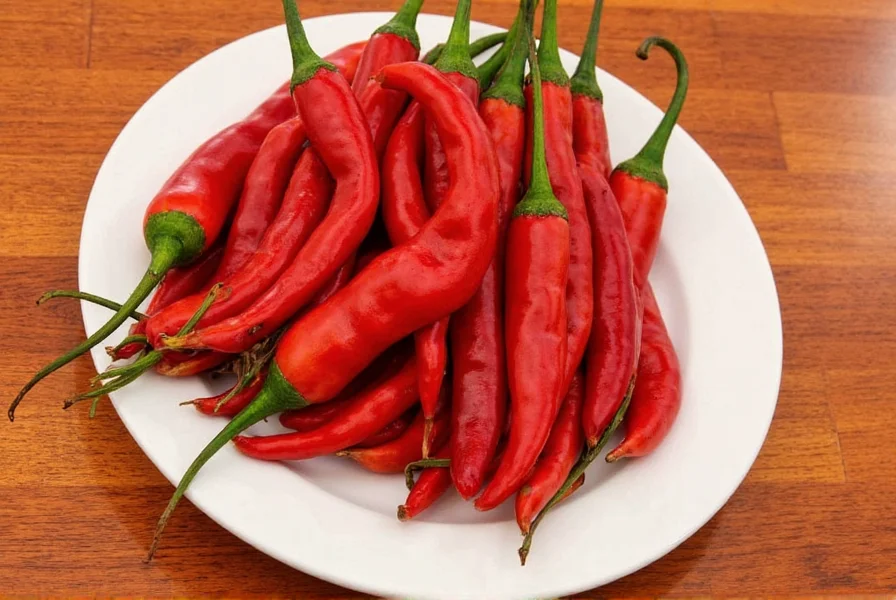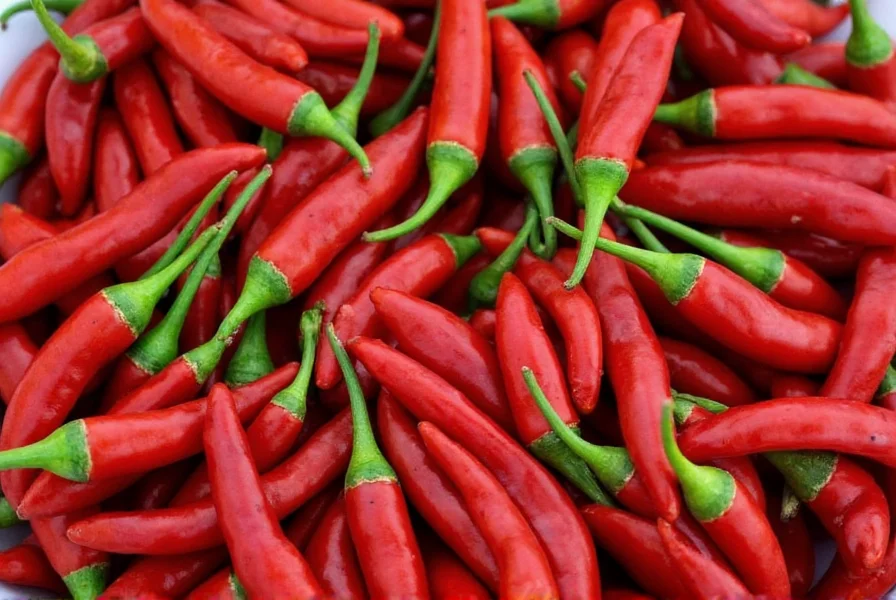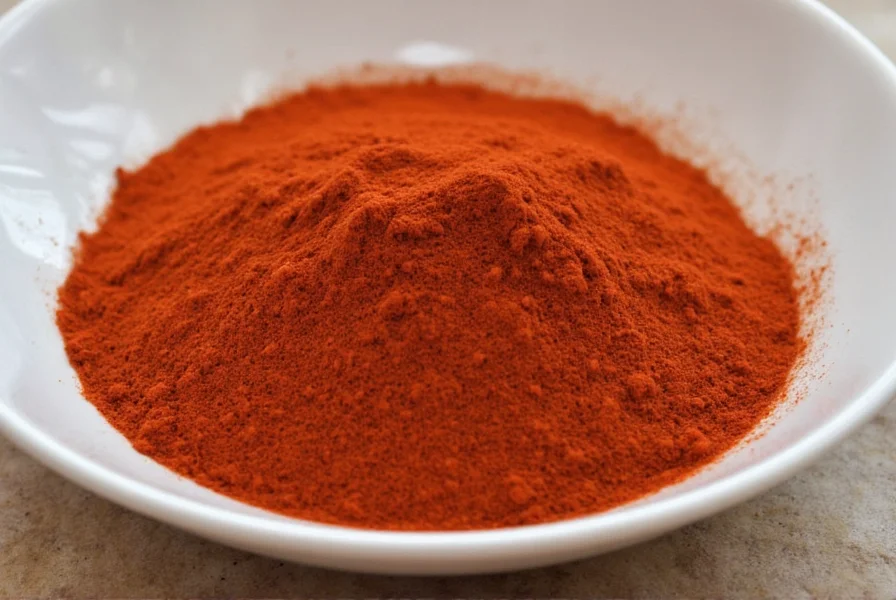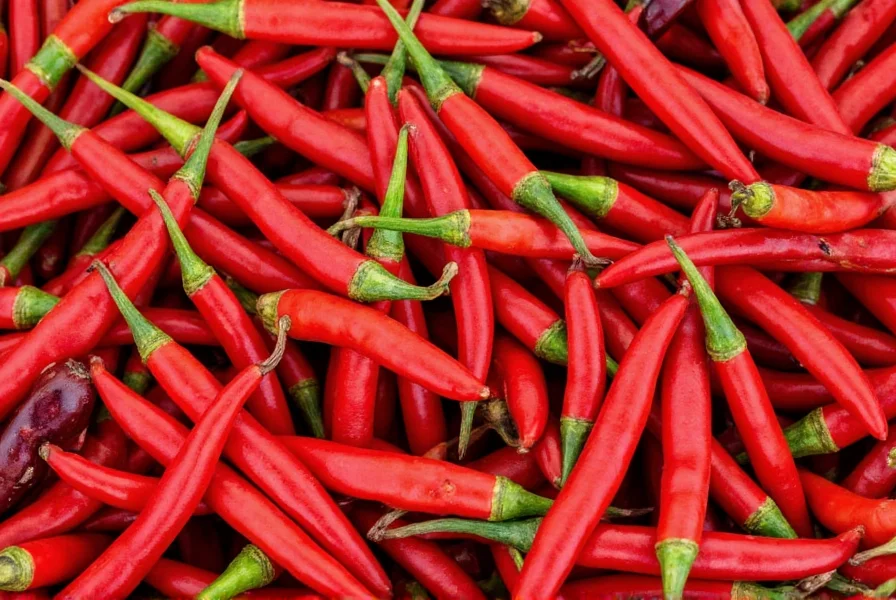Choosing the right chilli pepper is key to perfecting your dishes. This guide covers the top 10 chilli peppers by heat level, flavor profile, and best culinary uses—from mild bell peppers to ghost peppers—along with expert storage tips, safety advice, and substitution strategies for every recipe.

Top 10 Chilli Peppers for Cooking: Heat Levels & Best Uses
| Name | Heat Level (SHU) | Flavor Profile | Best For |
|---|---|---|---|
| Bell Pepper | 0 | Sweet, earthy, crunchy | Stir-fries, stuffed dishes, salads |
| Jalapeño | 2,500–8,000 | Grassy, slightly smoky | Salsas, nachos, pickling |
| Serrano | 10,000–23,000 | Sharp, bright, tangy | Garnishes, soups, salsas |
| Thai Bird's Eye | 50,000–100,000 | Earthy, citrusy, punchy | Thai curries, pad thai, chili paste |
| Cayenne | 30,000–50,000 | Woody, earthy, intense | Hot sauces, spice blends, powders |
| Hatch Green Chile | 2,500–5,000 | Smoky, grassy, rich | Southwest dishes, green chile sauces, stews |
| Poblano/Ancho | 1,000–2,000 | Earthy, fruity, smoky when dried | Mole sauce, rellenos, enchiladas |
| Habanero | 100,000–350,000 | Fruity, floral, super spicy | Caribbean jerk, hot sauces, chili oil |
| Scotch Bonnet | 100,000–350,000 | Tropical, sweet, intensely hot | Jamaican jerk seasoning, curry pastes |
| Ghost Pepper (Bhut Jolokia) | 855,000–1,041,427 | Earthy, floral, explosive | Extreme eating challenges, specialty sauces |
Scoville Scale Explained: How Heat Levels Affect Your Cooking
The Scoville Scale measures capsaicin concentration, the compound responsible for heat in chillies. Understanding these levels helps you match peppers to your dish's needs:
- 0–1,000 SHU: Mild (bell peppers, pimento) — perfect for beginners or subtle flavor
- 1,000–15,000 SHU: Medium (jalapeño, poblano) — versatile for salsas, sauces, and everyday cooking
- 15,000–100,000 SHU: Hot (serrano, Thai bird's eye) — ideal for bold flavors in Asian and Mexican cuisine
- 100,000+ SHU: Extreme (habanero, ghost pepper) — reserved for specialty dishes and experienced heat lovers
Culinary Techniques: Maximizing Flavor with Chilli Peppers
Chilli peppers add complexity beyond heat. Master these techniques to elevate your dishes:
- Roasting: Char bell peppers or Hatch chiles over open flame for smoky sweetness in sauces and dips
- Drying: Transform poblanos into anchos for mole sauces; crush dried Thai bird's eyes into curry powder
- Fermenting: Create tangy jalapeño or habanero ferments for tacos, sandwiches, and Bloody Marys
- Infusing: Steep fresh or dried peppers in oil/vinegar for custom chili oils and dressings
- Blending: Make harissa, sambal oelek, or gochujang-style pastes for authentic global flavors

Chilli Pepper Buying Guide: What to Look For
| Chilli | Best For | Where to Buy | Price Range | Substitutions |
|---|---|---|---|---|
| Jalapeño | Beginner-friendly spice, salsa, nachos | Supermarkets, Latin markets | $0.30–$0.60 each | Serrano (hotter), banana pepper (milder) |
| Hatch Green Chile | Southwest-style cooking, green chile sauces | Seasonal (Aug-Sep); canned year-round | $1–$3 per pound | Ancho chile powder (smokiness) |
| Thai Bird's Eye | Thai, Vietnamese, Malaysian dishes | Asian markets, online stores | $2–$4 per ounce | Serrano, cayenne powder |
| Cayenne | Spice blends, chili powder, dry rubs | Spice sections, health food stores | $2–$5 ground, $4–$8 whole pods | Tabasco peppers, powdered red pepper |
| Habanero | Caribbean jerk, extreme hot sauces | Latin markets, farmer's markets | $1–$2 each | Scotch bonnet (similar flavor), ghost pepper (hotter) |
Storage & Safety: Preserving Flavor and Preventing Burns
- Fresh Chillies: Store in paper bag in fridge crisper drawer (up to 2 weeks)
- Dried Chillies: Airtight container in cool, dark place (up to 1 year)
- Freezing: Freeze whole peppers for sauces/stews — no thawing needed
- Safety Protocol: Always wear gloves when handling ghost peppers; wash hands thoroughly; avoid touching eyes; use milk/oil to remove capsaicin from skin

Expert Answers: Chilli Pepper FAQs
How do chilli heat levels affect flavor beyond spiciness?
Heat levels significantly influence flavor perception. Mild peppers (0-1,000 SHU) showcase sweet, earthy notes, while medium heat (1,000-15,000 SHU) adds complexity without overwhelming. Hot peppers (15,000-100,000 SHU) bring bright citrus and floral notes, and extreme heat (100,000+ SHU) creates intense fruity flavors that can temporarily mask other tastes. Capsaicin binds to pain receptors, so higher heat levels reduce your ability to detect subtler flavor nuances.
How to safely handle super-hot chillies like ghost peppers?
Always wear nitrile gloves (latex doesn't block capsaicin), work in ventilated areas, and avoid touching your face. Use safety glasses to protect eyes from airborne particles. After handling, clean surfaces with soapy water and wash hands with oil or milk to dissolve capsaicin. Never use water alone, as it spreads the oil-based compound.
What's the best chilli for Thai cuisine?
Thai Bird's Eye peppers are essential for authentic Thai dishes. Their 50,000-100,000 SHU heat with citrusy, punchy flavor works perfectly in curries, pad thai, and chili pastes. For milder alternatives, use Serrano peppers but increase quantity slightly. Avoid Habaneros, as their tropical sweetness doesn't match traditional Thai flavor profiles.
How to substitute chilli peppers in recipes?
Match both heat level and flavor profile. For heat: 1 Serrano = 2 Jalapeños; 1/4 tsp cayenne = 1 fresh hot pepper. For flavor: use smoked paprika for dried Ancho's smokiness; Scotch Bonnet for Habanero in Caribbean dishes. Always consider the dish's cultural context — Thai recipes need Bird's Eye peppers, while Mexican dishes require Jalapeños or Serranos.
Why do chillies make my mouth burn, and how to stop it?
Capsaicin binds to pain receptors in your mouth. Water won't help (capsaicin is oil-based). Effective remedies: dairy products (milk, yogurt — casein breaks down capsaicin), sugar (honey or sweet drinks), or fats (peanut butter, olive oil). Avoid alcohol, as it spreads the compound. Prevention: add chillies gradually and taste as you cook.
Master Your Kitchen with the Right Chilli Peppers
From the sweet crunch of bell peppers to the explosive heat of ghost peppers, understanding chilli varieties transforms everyday cooking into culinary artistry. Use this guide to confidently select peppers for any dish, handle them safely, and unlock their full flavor potential.

Experiment fearlessly — the perfect chilli for your dish is just a bite away!










 浙公网安备
33010002000092号
浙公网安备
33010002000092号 浙B2-20120091-4
浙B2-20120091-4